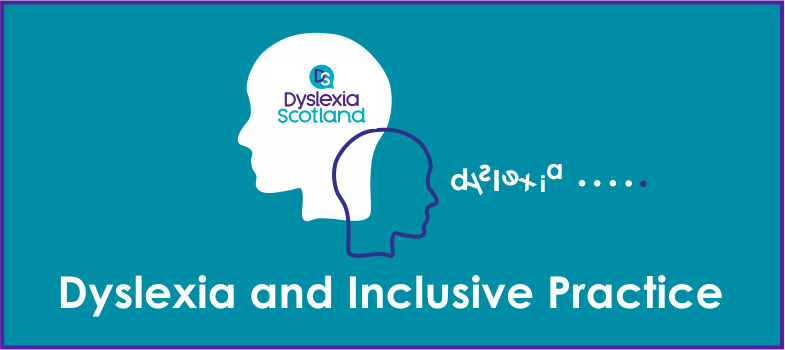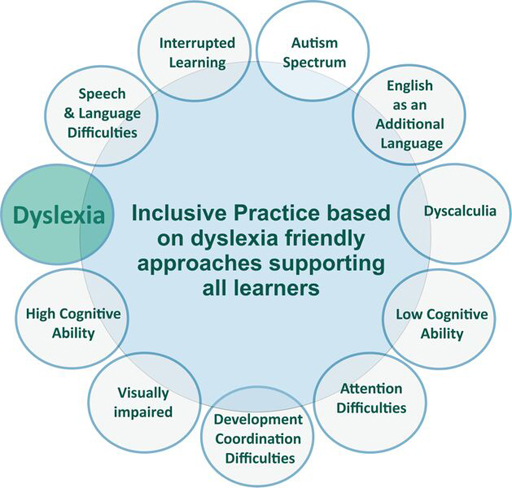2.3. The co–occurrence of dyslexia with other areas of additional support
Module 1, Section 2 Recap
The Scottish working definition of dyslexia is broad. As highlighted in Section 1.1 of this module, dyslexia does not only impact on the acquisition of literacy skills. The different characteristics involved with dyslexia are also found in a wide range of learner profiles and areas of additional support.
What is the impact of dyslexic challenges in the learning environment?
It is undoubtedly challenging to meet all the needs of learners within a teacher’s class. However, using a range of multi-sensory learning and teaching approaches within a curriculum which is planned to be inclusive and accessible does bring benefits that support and can reduce the challenge.
Figure 16 and the table below highlight some examples of co-occurrence and some support strategies
Activity 13
The table below highlights some examples of support strategies. Each strategy could be appropriate for a range of additional support needs. Consider each strategy and write down the area of ASN that would be supported by them. Click ‘Reveal answer’ to see some suggestions.
| Examples of support strategies |
| Personalised learning |
| Effective communication |
| Multi-sensory learning and teaching approaches |
| Visual time tables |
| Visual supports |
| Use of accessibility software e.g. text and speech recognition |
| Approaches to support language acquisition |
| Audio books |
| Accessible digital learning and teaching resources |
| Books for All |
| Digital exams |
Answer
| Examples of support strategies | Some examples of ASN which can be supported |
| Personalised learning | Dyslexia Autism spectrum Visually impaired English as an additional language Visual impairment |
| Effective communication | Dyslexia Autism spectrum Visually impaired English as an additional language Visual impairment |
| Multi-sensory learning and teaching approaches | Dyslexia Autism spectrum – if appropriate Visually impaired English as an additional language (Initially) |
| Visual time tables | Dyslexia Autism spectrum English as an additional language (Initially) |
| Visual supports | Dyslexia Autism spectrum Visually impaired English as an additional language Visual impairment |
| Use of accessibility software e.g. text and speech recognition | Dyslexia Autism spectrum Visually impaired |
| Approaches to support language acquisition | Dyslexia Autism spectrum English as an additional language (Initially) |
| Audio books | Dyslexia Autism spectrum English as an additional language (Initially) Visually impaired |
| Accessible digital learning and teaching resources | Dyslexia Autism spectrum Visually impaired |
| Books for All | Dyslexia Autism spectrum – if applicable Visually impaired |
| Digital exams | Dyslexia Autism spectrum Visually impaired |
2.2. Dyslexia and neurodiversity

